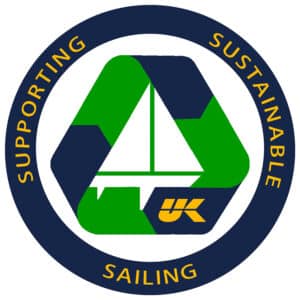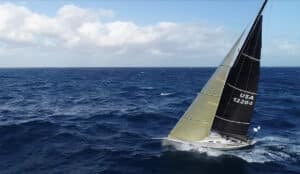First off, start by brushing up on the Definitions. There are some new ones this year but they don’t have much to do with the sailing rules (Part 2). The older definitions haven’t changed and they contain plenty of “meat and potatoes” as far as understanding the rules are concerned. Take some time and read them carefully, it will be time well spent.
By far, the biggest change to the rules of Part 2 is in Rule 18.3 (Tacking in the Zone). Now it only applies to port roundings and only to a boat that tacks to starboard tack within the zone and another boat that has been on starboard since entering the zone. In other words, if two port tack boats tack to starboard in the zone, 18.3 will not apply to that situation.
When 18.3 applies, the requirements for compliance are the same as they were before. Specifically, the boat that tacked cannot cause the boat that has been on starboard to sail above close hauled to avoid her and if the starboard boat becomes overlapped to leeward, she must be given mark-room.
Starboard roundings, while seldom used by Race Committees, are the same interesting tactical situation that they have always been.
New rule 18.2 (d) tells you when a boat that was entitled to mark-room is no longer so entitled. This is the spot where you must understand the definition of mark-room. The shut off does not necessarily happen by just getting around the mark. It may also include room to tack or gybe if such maneuvers are “necessary to sail the course”.
Another change for 2017 hidden in the back of the rule book is Appendix T Arbitration. Appendix T used to be a US Sailing prescription and was longer and more complicated. Now it just defines Post-Race Penalties and the Arbitration process. If included in the NOR or Sailing Instructions of a regatta, Appendix T will give sailors an opportunity to take a lesser penalty than disqualification if they break a rule of Part 2 and fail to take a penalty while racing.
Appendix T will likely become very popular with race organizers because it provides for Arbitration and Post-Race Penalties both of which can serve to reduce the need for protest hearings.
The U Flag Rule: The U Flag Rule has been added to Rule 30 STARTING PENALTIES. It may be used by Race Committees as the Preparatory Signal. When used, a boat that is OCS during last minute before her start will be disqualified without a hearing unless the race is restarted or re-sailed. The U Flag penalty is a little less severe than the Z Flag Rule and will likely be used in its place in many regattas.
Preambles; Part 2, Section A, Section C and Section D have preambles. Take the time to read them. They tell you when the rules referred to apply, or don’t apply or they serve to explain what the rules in that section are about.
For instance, the preamble to Part 2 WHEN BOATS MEET, tells you when the racing rules start to apply and the preamble to Section C (Rules 18, 19 & 20) tells you when those rules do not apply. Specifically they do not apply “at a starting mark surrounded by navigable water or at its anchor line form the time boats are approaching them to start until they have passed them.”




Another change that could catch people out is when the new Appendix S is used. It specifies a 1 hour cut-off for protests after the last boat finishes whereas the RRS, both new and old, specify a default of 2 hours. Be careful if anyone specifys the use of Appendix S!
Another change that could catch people out is when the new Appendix S is used. It specifies a 1 hour cut-off for protests after the last boat finishes whereas the RRS, both new and old, specify a default of 2 hours. Be careful if anyone specifys the use of Appendix S!
The article misses a point in that 18.3 and the zone also applies at the port end finishing mark. Therefore the article should not use the term "port rounding". The rules use the term "mark to be left to port" which includes the port end finishing mark..
In what universe is that the disqualification of a boat for infringing the rule is better or "less severe" than a percentage penalty applied to a boat that continues to race? The "U" flag is an incomplete attempt to make adjustments for the failure of the "black flag" rule. If you are at all wondering why the sport has participation issues then consider the costs of putting together a boat and crew, transporting them 1000 miles to a regatta only to be ejected for a stating line transgression, which Rule exists ONLY to help the the RC get a fair start and is not an infraction against another boat. Frankly, you either ‘get this’ or you do not. Stop needlessly disqualifying boats to achieve fair racing. The "Z" flag rule works great in a world in which sailors want to race and the RC is not too lazy to administer itself on behalf of the racers.